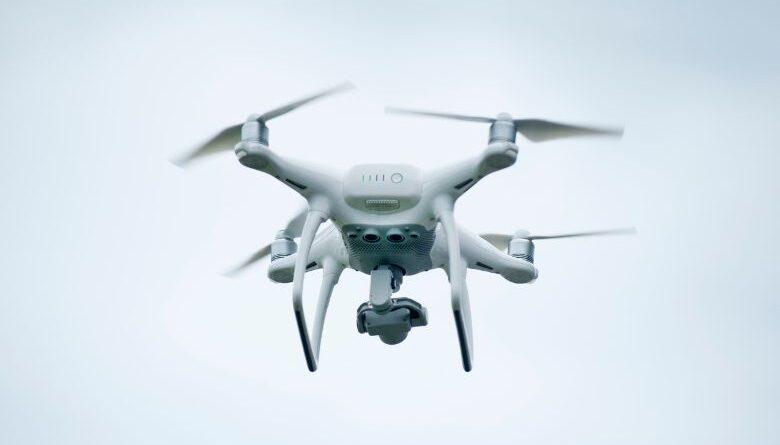The Future of Autonomous Drones: From Delivery to Surveillance
The Future of Autonomous Drones: From Delivery to Surveillance
Introduction
Autonomous drones, once confined to science fiction, have now become a reality, revolutionizing various industries. These unmanned aerial vehicles (UAVs) have evolved from mere toys to advanced technological tools that hold immense potential in diverse applications. In this article, we will explore the future of autonomous drones, focusing on their utilization in delivery services and surveillance.
The Advancements in Autonomous Drone Technology
In recent years, rapid advancements in drone technology have propelled the development of autonomous drones. Cutting-edge sensors, GPS systems, and sophisticated algorithms have enabled drones to navigate and make decisions autonomously, reducing the need for human intervention. These drones are capable of analyzing their surroundings, identifying obstacles, and adjusting their flight path accordingly.
Autonomous Drones in Delivery Services
The logistics and e-commerce industries have been quick to embrace the potential of autonomous drones in revolutionizing delivery services. Companies like Amazon and DHL have already started testing drone delivery systems. These drones promise faster and more efficient deliveries, especially in hard-to-reach areas, reducing delivery times and operational costs.
The Role of Drones in Surveillance
Apart from delivery services, autonomous drones have found critical applications in surveillance and security. Law enforcement agencies and private organizations utilize drones for monitoring crowds during events, search and rescue operations, and surveillance in remote locations. The ability of drones to access areas where humans may encounter difficulties ensures enhanced safety and situational awareness.
The Integration of AI and Machine Learning in Autonomous Drones
The integration of Artificial Intelligence (AI) and Machine Learning (ML) technologies has further amplified the capabilities of autonomous drones. AI algorithms enable drones to process vast amounts of data in real time, enhancing their decision-making abilities and enabling more sophisticated tasks. For instance, drones can now detect anomalies, recognize objects, and even predict potential issues, making them invaluable tools in various industries.
Addressing Concerns and Challenges
While the prospects of autonomous drones are promising, there are still concerns that need to be addressed. Privacy and security issues have been raised due to the extensive data collection capabilities of drones. Additionally, the potential for drone-related accidents and the need for air traffic management require robust regulations and safety protocols.
The Regulatory Landscape for Autonomous Drones
To ensure the safe integration of drones into airspace, regulatory bodies worldwide are actively working on formulating guidelines for drone operations. These regulations aim to strike a balance between fostering innovation and addressing safety concerns. Compliance with these regulations is crucial for the responsible and widespread adoption of autonomous drones.
The Future Potential of Autonomous Drones
The future of autonomous drones appears boundless. As technology continues to evolve, drones are likely to play an even more significant role in various industries. From medical supply deliveries in remote areas to environmental monitoring and disaster response, drones have the potential to transform multiple sectors and improve lives worldwide.
Conclusion
Autonomous drones have moved beyond the realm of novelty and are now poised to revolutionize the way we approach delivery services, surveillance, and beyond. The seamless integration of advanced technology, coupled with the power of AI and machine learning, ensures that drones will continue to play a pivotal role in shaping the future. However, as we embrace this technology, it is essential to address challenges, uphold safety measures, and establish comprehensive regulations to harness the full potential of autonomous drones.
FAQs
- How do autonomous drones navigate without human intervention?
- Autonomous drones utilize sophisticated sensors and GPS systems, coupled with advanced algorithms, to analyze their surroundings and make autonomous flight decisions.
- What industries can benefit from autonomous drone technology?
- Autonomous drones have applications in various industries, including logistics, e-commerce, agriculture, surveillance, and search and rescue operations.
- Are there privacy concerns related to drone technology?
- Yes, privacy concerns have been raised due to the extensive data collection capabilities of drones. Regulatory measures are being developed to address these issues.
- How can autonomous drones improve delivery services?
- Autonomous drones can significantly improve delivery services by reducing delivery times, reaching remote areas, and cutting operational costs.
- What role does AI play in autonomous drones?
- AI enables drones to process vast amounts of data in real time, enhancing their decision-making capabilities and enabling advanced tasks like object recognition and anomaly detection.
- Blockchain and Intellectual Property: Protecting Creators’ Rights





Pingback: AI in Agriculture: Precision Farming and Sustainable Practices | UTHSI 2023